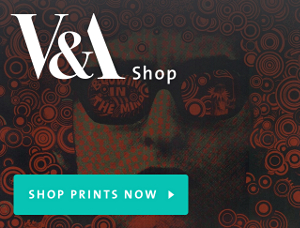Conservation Journal
Autumn 2000 Issue 36
Editorial - Science Meets Art in South Kensington
One hundred and forty years ago it was asserted that 'The South Kensington Museum now takes the lead, and surpasses all former scientific institutions by its vastly superior collections of models and works of art'1 . Thirty years later the science collections (the informative, educational bit) were separated out from the South Kensington Museum to become the Science Museum. The remaining collections of works of art (the artistic, aesthetic bit) eventually became the Victoria and Albert Museum. By the end of the nineteenth century the words 'Science' and 'Art' had assumed connotations that reinforced the naturalness of this separation. In some minds the trend towards apartheid has continued.
By the last decade of the twentieth century other more liberal minds had been thinking that this intellectual separation should be re-addressed, especially in South Kensington where there are so many education and research institutions with a common Victorian genesis. One expression of this will be the exhibition 'Inventing New Britain: The Victorian Vision', opening at the V&A next spring, which will explore Victorian society through examples of art and technology and will examine Prince Albert's role as patron of the arts and sciences.
A very recent manifestation was the 'creating SPARKS' festival designed to celebrate creativity at the frontiers of the sciences and the arts. Originating in the British Association annual week of science2 , the event grew and developed into a remarkable mixture of performances, debates, workshops and exhibitions involving eight South Kensington institutions. In his introduction to the festival programme the prime minister, Tony Blair, described it as 'the greatest celebration of creativity that this part of London has seen since the Great Exhibition of 1851'. He stressed that at the start of the 21st century both the sciences and the arts were essential to building economic, social and cultural prosperity.
One of the V&A's contributions to the festival was the preparation of a self-guided tour around the galleries entitled 'more than meets the eye'. This collaboration between The Royal Society, the journal Nature and the V&A, was supported by L'Oréal, famed for popularising the 'science bit' in their advertising. The intention of the series of displays was to reveal the interplay between artistic expression, scientific understanding and technological innovation. The processes of seeing and creating, of replication and decay occupy territory that is simultaneously both art and science.
Conservation has for fifty years been acknowledged as an essential collaboration between art, craft and science. For nine years the pages of this Journal have carried articles that reinforce this fact. This edition, timed to coincide with 'more than meets the eye', which continues until November 3rd, is an affirmation that there is a role for what is identifiable as science within institutions that are more readily identified with art. Throughout the past decade the successful collaboration between South Kensington institutions known as RCA/V&A Conservation has grown. The study of surface topography reported in this issue is another successful collaboration with Imperial College. The contributions in this edition from students at the British Museum and Tate show that the collaboration now extends beyond Albertopolis.
The re-integration of science and art through conservation has been further demonstrated recently by two appointments at the Royal College of Art. As announced in the last journal, Alan Cummings, a conservator originally trained as a scientist, was appointed as Pro-rector. More recently, as another conservator trained as a scientist, I was appointed Visiting Director at the Royal College. At the very end of the twentieth century, a senior V&A administrator remarked that the relevance of a science section within a decorative arts museum should be reviewed. Such a review has proved to be relevant, in so much as it has highlighted and strengthened the links between the two.
References:
1. Introduction to 'The Playbook of Science', John Henry Pepper, Routledge 1860
2. The British Association for the Advancement of Science has been promoting awareness and appreciation of science, engineering and technology for 150 years. http://www.britassoc.org.uk/

Autumn 2000 Issue 36
- Editorial - Science Meets Art in South Kensington
- Conservation Award
- Creating Sparks
- Defining Conservation Science: Training and the Profession
- Postgraduate Training in Conservation at the Hungarian National Museum
- Science and Art: Separated by a Common Language?
- Science in the Galleries
- Topographical Studies in the Conservation of Statuary Materials
- Printer Friendly Version